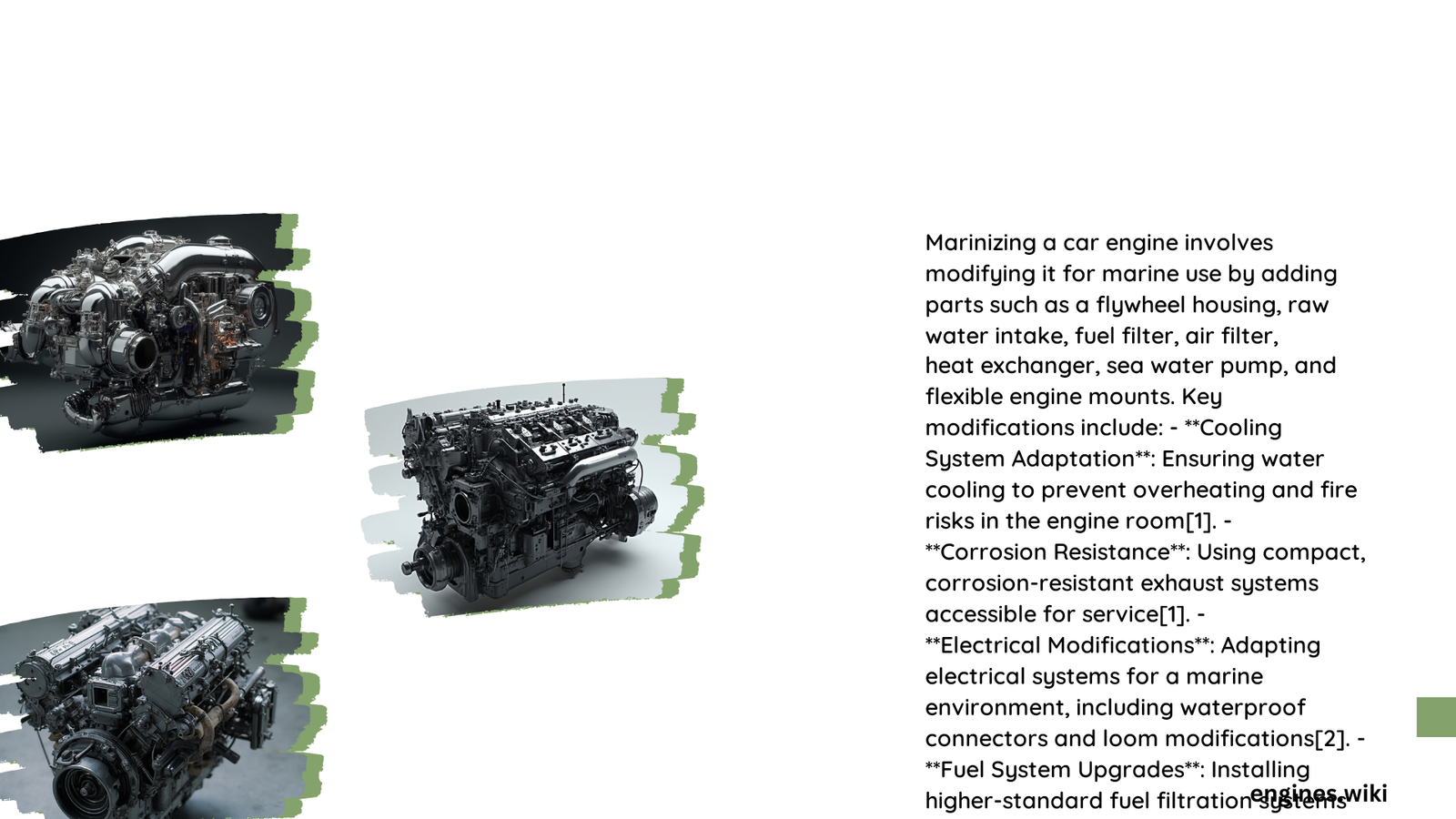Marinizing a car engine transforms a standard automotive powerplant into a robust marine propulsion system through strategic modifications. This complex process involves comprehensive engineering adaptations that address unique marine environmental challenges, including saltwater corrosion, cooling requirements, and specialized performance demands. Boat enthusiasts and marine mechanics must carefully select, modify, and protect automotive engines to ensure reliable and efficient marine operation.
What Makes Marine Engine Conversion Unique?
Marine engine conversion is not a simple plug-and-play process. It requires meticulous engineering and specialized knowledge to transform a land-based engine into a seaworthy powerplant. The conversion involves multiple critical steps that address fundamental differences between automotive and marine operating environments.
Why Choose Car Engine for Marine Use?
| Advantage | Description | Potential Benefit |
|---|---|---|
| Cost-Effectiveness | Cheaper than purpose-built marine engines | Significant savings |
| Availability | Wide range of automotive engines | Easy parts replacement |
| Performance Potential | Robust design with modification potential | Enhanced marine capabilities |
What Components Require Immediate Modification?
Cooling System Transformation
Converting an automotive cooling system for marine use demands comprehensive modifications:
- Raw Water Pump Installation: Replace standard water pump with marine-grade brass impeller pump
- Heat Exchanger Integration: Install marine-specific heat exchange system
- Water-Cooled Exhaust Manifolds: Implement specialized manifolds for underwater exhaust management
Corrosion Protection Strategies
Protecting the engine from saltwater’s destructive properties requires multiple approaches:
- Apply marine-grade epoxy coatings
- Replace standard components with corrosion-resistant materials
- Use stainless steel and brass components
- Implement sacrificial anodes for additional protection
How to Select the Right Engine for Marinization?
When choosing an engine for marine conversion, consider these critical factors:
- Power-to-Weight Ratio: Ensure sufficient thrust generation
- Size Constraints: Match engine dimensions with boat requirements
- Fuel Efficiency: Optimize marine performance characteristics
- Parts Availability: Select engines with widespread component support
What Electrical System Upgrades Are Necessary?
Marine environments demand specialized electrical components:
- Marine-rated starter motors
- Corrosion-resistant alternators
- Waterproof electrical connections
- Enhanced grounding systems
- Spark-resistant electrical components
What Transmission Modifications Ensure Proper Performance?
Transmission adaptation is crucial for marine propulsion:
- Install marine-specific transmission
- Implement V-drive or direct drive systems
- Modify gear ratios for propeller performance
- Ensure robust forward and reverse capabilities
How to Manage Fuel System for Marine Use?
Fuel system marinization involves:
- Marine-grade fuel pumps
- Water-separating fuel filters
- Corrosion-resistant fuel lines
- Enhanced fuel delivery mechanisms
What Are Common Challenges in Engine Marinization?
| Challenge | Potential Solution | Complexity |
|---|---|---|
| Corrosion | Specialized coatings | High |
| Cooling | Heat exchanger system | Medium |
| Electrical | Marine-rated components | High |
| Transmission | Custom marine drives | Very High |
Conclusion

Marinizing a car engine requires extensive technical knowledge, precise modifications, and a comprehensive understanding of marine engineering principles. Success depends on careful planning, quality components, and meticulous implementation.
